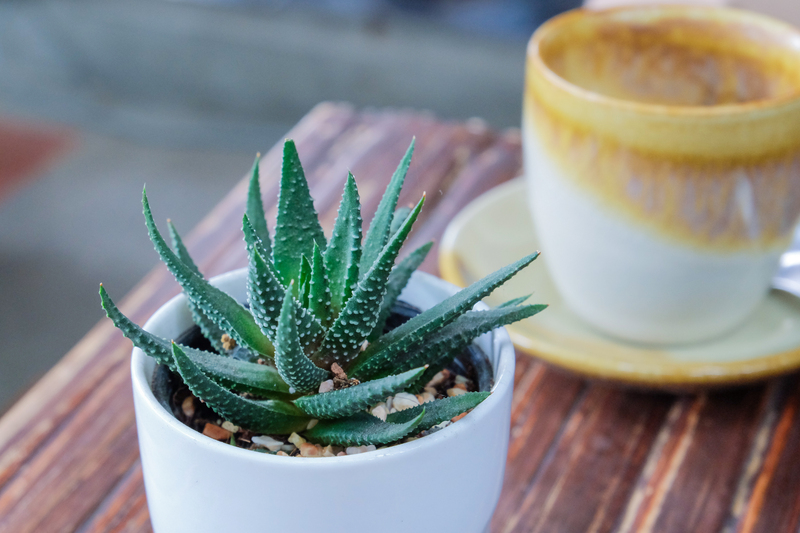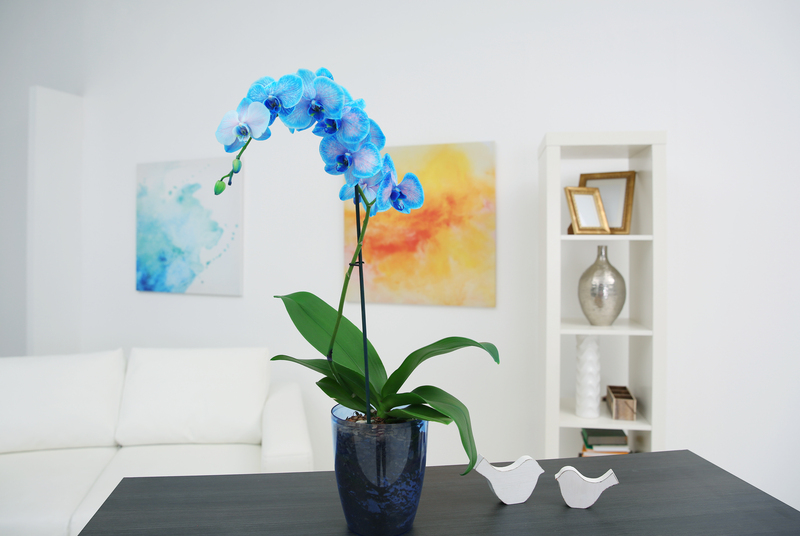Integrating Your Love for Plants and Pets
Posted on 01/06/2025
Integrating Your Love for Plants and Pets: A Complete Guide
Are you passionate about both houseplants and furry companions? You're not alone! Many pet parents also love filling their homes with lush greenery, but combining your affection for both can be challenging. Certain plants are toxic to pets, while mischievous pets love digging, chewing, or knocking over pots. With the right knowledge and strategies, however, integrating your love for plants and pets can create a vibrant, harmonious living space--safe for every member of your household.
Why Combine Plants and Pets?
Pet owners who also adore indoor gardening enjoy unique benefits when integrating greenery into pet-friendly homes:
- Improved air quality: Many plants remove toxins and boost oxygen levels.
- Stress relief: Both pets and plants have calming, mood-boosting effects.
- Enhanced aesthetics: Combining greenery with playful pets creates a lively, cozy atmosphere.
- Promotes healthy routines: Taking care of pets and plants encourages daily mindfulness and responsibility.
However, it's essential to ensure your plant collection doesn't compromise your animals' safety and well-being.

Understanding Plant Safety for Pets
Many popular houseplants can be toxic to animals if ingested. As a responsible plant and pet parent, your first priority should be choosing pet-safe plants. This not only protects your furry loved ones but also puts your mind at ease.
Common Toxic Plants to Avoid
Never bring in any plant without first checking for pet toxicity. Some of the most hazardous plants for both dogs and cats include:
- Lilies (deadly for cats)
- Sago Palm
- Pothos (Devil's Ivy)
- Monstera Deliciosa
- Philodendron
- Dieffenbachia (Dumb Cane)
- Oleander
- Aloe Vera (toxic if ingested by pets)
If you're unsure, consult the ASPCA's Toxic and Non-Toxic Plants List.
Pet-Safe Alternatives for Your Green Oasis
Luckily, countless beautiful and easy-to-care-for plants are non-toxic to cats and dogs. Consider these pet-friendly indoor plants:
- Spider Plant (Chlorophytum comosum)
- Areca Palm (Dypsis lutescens)
- Bamboo Palm
- Boston Fern
- Ponytail Palm
- Haworthia
- Calathea (Prayer Plant)
- Peperomia
- Orchids (Phalaenopsis and others)
These options allow you to integrate your love for plants with your love for pets without compromise.
Design Tips for Pet-Friendly Plant Spaces
Once you have your safe selections, it's time to design a home that welcomes both houseplants and pets.
1. Clever Placement Strategies
Keep in mind your pet's height, agility, and behavior to prevent headaches later:
- Hanging planters: Keep both trailing and bushy plants out of paws' reach.
- High shelves: Use sturdy shelves anchored to walls to prevent toppling.
- Terrariums: Use enclosed glass terrariums for smaller, delicate, or rare plants.
- Plant stands: Choose elevated units that make access for pets difficult.
2. Secure Your Plants and Pots
Some pets love knocking over pots or digging in the soil. To combat this, try:
- Heavier pots: Use large, sturdy containers that are harder to tip over.
- Top dressing: Add decorative stones or pine cones to deter digging.
- Double-potting: Insert smaller planters into larger, heavier decorative pots.
3. Use Fencing and Barriers
Small fences or mesh screens can protect vulnerable floor plants, especially when acclimating a new puppy or kitten to household rules.
4. Encourage Good Behavior
Positive reinforcement goes a long way in maintaining harmony between pets and houseplants. Distract pets from plants with:
- Cat grass: Planting cat grass can satisfy your feline's craving for greenery.
- Plenty of toys: Engage dogs and cats with stimulating toys to reduce curiosity about plants.
- Training: Reward your pets for ignoring plants.
Creative Ways to Integrate Plants and Pets
Beyond safety, integrating your love for plants and pets can be visually stunning. Here are some design and lifestyle tips:
Build a Pet-Safe Indoor Jungle
Create zones in your home that showcase both hobbies:
- Window gardens: Place hanging or shelf plants in sunlit spots, with soft pet beds below.
- Wall-mounted displays: Use wall planters and shelves to turn plants into vertical artwork.
- Plant nooks: Group large, pet-safe plants to form "mini jungles" around favorite pet lounges.
DIY Catios and Dog Spaces with Greenery
If you have an outdoor space, consider creating a catio (cat patio) or dog relaxation area filled with non-toxic plants and grasses. Basil, catnip, lemongrass, and wheatgrass are favorites!
Edible Gardens for Pets
Why not grow herbs for both your pet and your dinner table? Many pet parents enjoy cultivating catnip, mint, and basil, which are safe and enjoyable for animals.
Keeping Plants and Pets Healthy Together
Maintaining the well-being of both your houseplants and your animals is key to lasting harmony. Here's how:
Monitor the Microclimate
- Humidity: Some pets and many houseplants (like ferns and calatheas) enjoy higher humidity, while others do not. Invest in a humidifier with coverage appropriate for both. Avoid misting plants too close to pet sleeping areas to prevent skin irritation.
- Sunlight: Place cat perches or dog beds in or near bright rooms, but keep in mind which plants prefer shade versus direct sun.
Fertility and Pest Management
- Safe fertilizers: Choose pet-friendly, organic plant fertilizers. Avoid chemical pesticides or fungicides--if you must use them, keep treated plants far from animal access.
- Pest prevention: Pick up fallen leaves, unused water, or spilled soil promptly. These can attract curious pets or bugs.
Avoid Plant Overcrowding
Clustered pots make tempting hiding or digging spots! Allow room between your houseplants for both aesthetics and safety.
Common Challenges When Mixing Plants and Pets
Combining your passions for indoor gardening and pet care comes with a few hurdles. Recognizing and proactively addressing them will save you time, stress, and expense!
Chewing and Digging
Kittens and puppies are notorious for chewing everything in sight. If your pet nips at leaves or digs in pots:
- Rotate tempting plants to hard-to-reach locations.
- Cover soil with decorative rocks, pine cones, or even aluminum foil temporarily.
- Use mild pet-safe deterrents (citrus scents, bitter apple sprays).
Accidental Knock-Overs
Pets love to zoom through the house, sometimes toppling plant stands or delicate planters in the process. To prevent breakage, choose sturdy containers and place them where zoomies are least likely to occur!
Potential Allergies or Skin Sensitivity
Some pets can develop allergic reactions to certain plants even if those plants aren't toxic. If your pet shows itchiness, sneezing, or digestive distress, consult your veterinarian and reevaluate your plant choices.

The Emotional Rewards of Integrating Plants and Pets
The psychological and lifestyle benefits of blending pet ownership with plant parenting are immense. Nature and animals both lower stress, help combat loneliness, and encourage us to live more mindfully. Creating a space where your furry companion and your plant collection both thrive brings a sense of pride and joy.
In summary: Integrating your love for both houseplants and pets isn't just possible--it's rewarding. By prioritizing plant safety, utilizing clever design strategies, and focusing on the well-being of everyone in your household, you can curate a home that is beautiful, vibrant, and harmonious.
FAQs: Integrating Your Love for Plants and Pets
- Can I have plants in my home with cats or dogs?
Absolutely! Choose pet-safe plants, carefully plan your layout, and monitor your pet's behavior for best results. - How do I stop my cat from chewing on my houseplants?
Use deterrents, supply alternatives like cat grass, and elevate your plants out of reach. - Which houseplants are totally non-toxic to pets?
Spider plants, Boston ferns, areca palms, and orchids are all great choices. - What should I do if my pet eats a plant?
Check the plant for toxicity and call your veterinarian immediately if it's on a harmful list or your pet acts strangely.
Final Thoughts on Integrating Your Love for Plants and Pets
Embrace the process! With knowledge, flexibility, and creativity, you can experience the best of both worlds--lush greenery and happy, healthy pets. Integrating your passion for plants and pets is about creating a thriving, nurturing home for all life under your roof.



